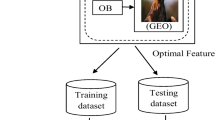Abstract
It is of great importance to categorize the number of bugs over time for both software project managers and its end users. This paper proposes a novel approach called BugCat (i.e., Bug number Categorization) to categorize the bug numbers of software with multi-modal time series learning. The time series derived from the five modalities are used as the inputs of the proposed BugCat approach as the bug number, the day of the week, the day off, bug severity and bug priority. Then, the LSTM (Long Short-Term Memory) embedding is conducted on the five modalities of times series separately and, the concatenated vectors derived from data fusion on the five LSTM embeddings are used as the input of the full-connected neural network with ReLU (Rectified Linear Unit) activation to categorize the bug numbers of software. The extensive experiments with the Mozilla Firefox bug data demonstrate the superiority of the proposed BugCat approach over state-of-the-art techniques including multi-layer perceptron (MLP), fully convolutional network (FCN) and LSTM.
Access this chapter
Tax calculation will be finalised at checkout
Purchases are for personal use only
Similar content being viewed by others
References
Chen, X., Zhang, D., Zhao, Y., Cui, Z., Ni, C.: Software defect number prediction: unsupervised vs supervised methods. Inf. Softw. Technol. 106, 161–181 (2019). https://doi.org/10.1016/j.infsof.2018.10.003
Choetkiertikul, M., Dam, H.K., Tran, T., Ghose, A.: Predicting delays in software projects using networked classification (T). In: 2015 30th IEEE/ACM International Conference on Automated Software Engineering (ASE), Lincoln, NE, USA, pp. 353–364. IEEE (2015). https://doi.org/10.1109/ASE.2015.55
Runeson, P., Alexandersson, M., Nyholm, O.: Detection of duplicate defect reports using natural language processing. In: 29th International Conference on Software Engineering (ICSE 2007), Minneapolis, MN, USA, pp. 499–510. IEEE (2007). https://doi.org/10.1109/ICSE.2007.32
Yang, X., Tang, K., Yao, X.: A learning-to-rank approach to software defect prediction. IEEE Trans. Rel. 64, 234–246 (2015). https://doi.org/10.1109/TR.2014.2370891
Wu, W., Zhang, W., Yang, Y., Wang, Q.: Time series analysis for bug number prediction. In: Proceedings of the 2nd International Conference on Software Engineering and Data Mining, pp. 589–596 (2010)
Pati, J., Shukla, K.K.: A comparison of ARIMA, neural network and a hybrid technique for Debian bug number prediction. In: 2014 International Conference on Computer and Communication Technology (ICCCT), Allahabad, India, pp. 47–53. IEEE (2014). https://doi.org/10.1109/ICCCT.2014.7001468
Pati, J., Kumar, B., Manjhi, D., Shukla, K.K.: A comparison among ARIMA, BP-NN, and MOGA-NN for software clone evolution prediction. IEEE Access. 5, 11841–11851 (2017). https://doi.org/10.1109/ACCESS.2017.2707539
Zhang, W., Du, Y., Yoshida, T., Wang, Q., Li, X.: SamEn-SVR: using sample entropy and support vector regression for bug number prediction. IET Softw. 12, 183–189 (2018). https://doi.org/10.1049/iet-sen.2017.0168
Andreou, A.S., Chatzis, S.P.: Software defect prediction using doubly stochastic Poisson processes driven by stochastic belief networks. J. Syst. Softw. 122, 72–82 (2016). https://doi.org/10.1016/j.jss.2016.09.001
Rathore, S.S., Kumar, S.: Towards an ensemble based system for predicting the number of software faults. Expert Syst. Appl. 82, 357–382 (2017). https://doi.org/10.1016/j.eswa.2017.04.014
Qiao, L., Li, X., Umer, Q., Guo, P.: Deep learning based software defect prediction. Neurocomputing 385, 100–110 (2020). https://doi.org/10.1016/j.neucom.2019.11.067
Yu, X., Keung, J., Xiao, Y., Feng, S., Li, F., Dai, H.: Predicting the precise number of software defects: Are we there yet? Inf. Softw. Technol. 146, 106847 (2022). https://doi.org/10.1016/j.infsof.2022.106847
Zhang, T., Chen, J., Yang, G., Lee, B., Luo, X.: Towards more accurate severity prediction and fixer recommendation of software bugs. J. Syst. Softw. 117, 166–184 (2016). https://doi.org/10.1016/j.jss.2016.02.034
Tian, Y., Lo, D., Xia, X., Sun, C.: Automated prediction of bug report priority using multi-factor analysis. Empir. Softw. Eng. 20(5), 1354–1383 (2014). https://doi.org/10.1007/s10664-014-9331-y
Acknowledgment
This research is supported in part by Beijing Youth Talent Fund No. Q0011019202001; National Natural Science Foundation of China under Grant No. 72174018; the Beijing Natural Science Foundation under Grant No. 9222001 and the Philosophy and Sociology Science Fund from Beijing Municipal Education Commission (SZ202110005001).
Author information
Authors and Affiliations
Corresponding authors
Editor information
Editors and Affiliations
Rights and permissions
Copyright information
© 2022 The Author(s), under exclusive license to Springer Nature Singapore Pte Ltd.
About this paper
Cite this paper
Zhang, W., Li, R., Zhao, J., Peng, R., Li, Y., Chen, J. (2022). BugCat: A Novel Approach to Bug Number Categorization with Multi-modal Time Series Learning. In: Chen, J., Hashimoto, T., Tang, X., Wu, J. (eds) Knowledge and Systems Sciences. KSS 2022. Communications in Computer and Information Science, vol 1592. Springer, Singapore. https://doi.org/10.1007/978-981-19-3610-4_2
Download citation
DOI: https://doi.org/10.1007/978-981-19-3610-4_2
Published:
Publisher Name: Springer, Singapore
Print ISBN: 978-981-19-3609-8
Online ISBN: 978-981-19-3610-4
eBook Packages: Computer ScienceComputer Science (R0)




